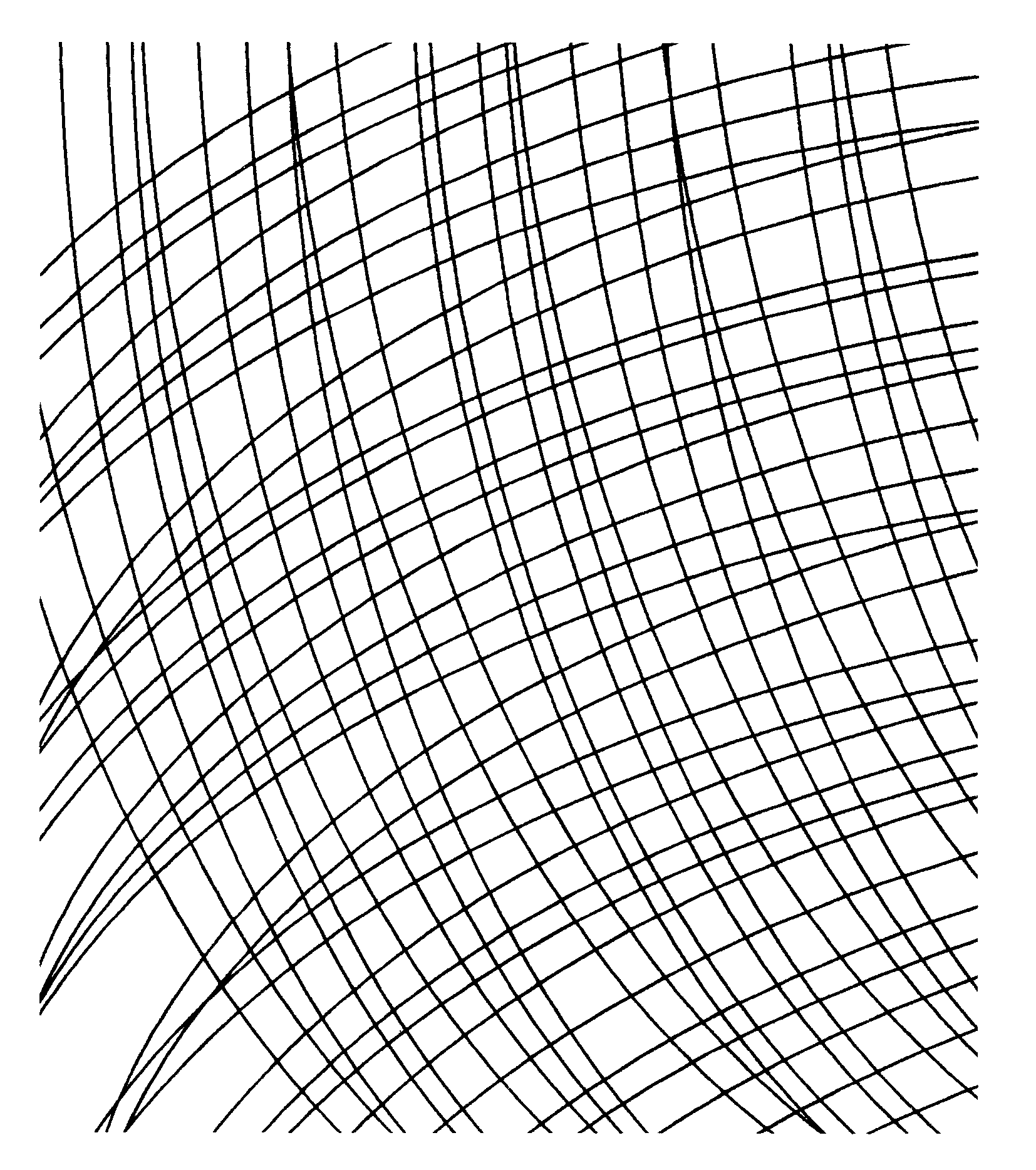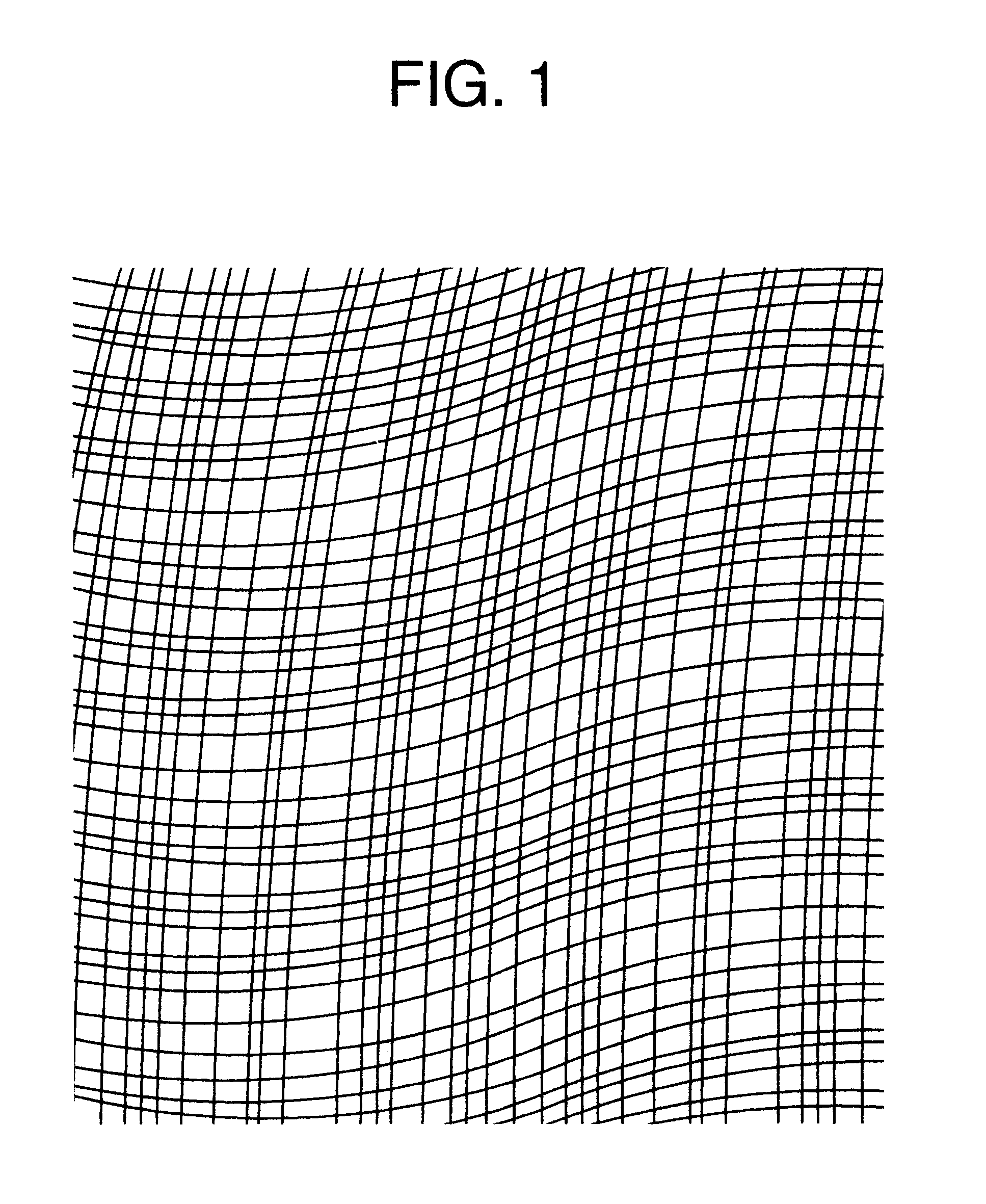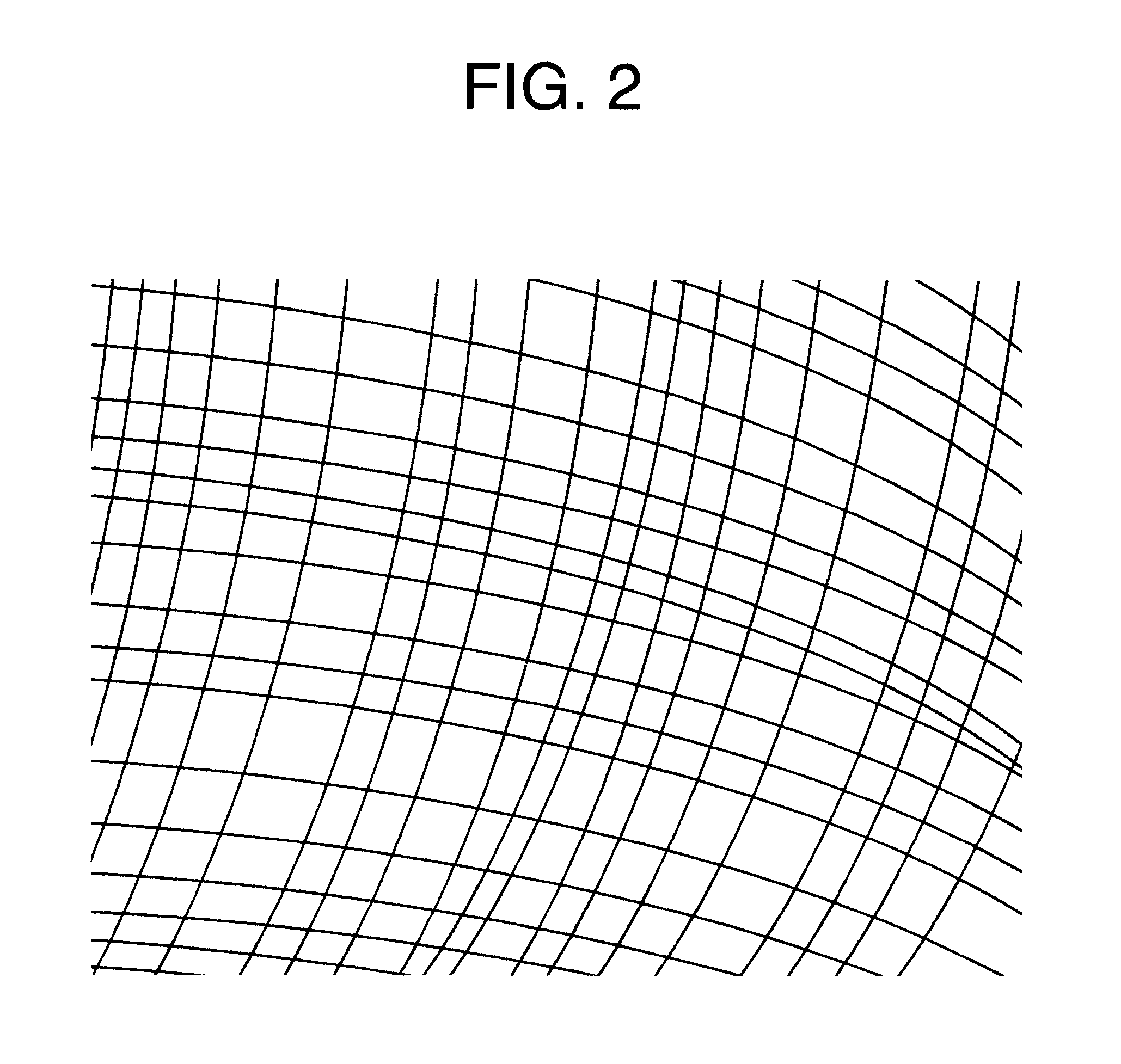Transparent electromagnetic wave shield
a technology of electromagnetic wave shielding and transparent material, which is applied in the direction of instruments, other domestic objects, synthetic resin layered products, etc., can solve the problems of unsuitable materials for light permeability use, difficult to maintain a stable electromagnetic wave shielding effect for a long time, and ineffective composite oxide in preventing leakage of electromagnetic waves, etc., to achieve disadvantageous weight and transparency, prevent irregular reflection, and increase strength
- Summary
- Abstract
- Description
- Claims
- Application Information
AI Technical Summary
Benefits of technology
Problems solved by technology
Method used
Image
Examples
examples 2 and 3
A polyurethane adhesive layer 1 was coated on a 75 .mu.m thick PET film, and then a copper foil (12 .mu.m thick) was laminated thereon to obtain a copper-foiled PET film. The conductive layer was patterned by photolithography to form a pattern comprising longitudinal and lateral array of curves expressed by Sin and Tan functions. The line width of the pattern was 10 .mu.m. The pitch of the lines was set according to the above-shown equation (6) (Example 2) and the following equation (7) (Example 3).
Pi=100+(170-150).times..alpha.i (7)
(.alpha.i: random number between 0 and 1)
Then, on one side of a 2 mm thick polycarbonate substrate was applied an antireflection hard coat with a pencil hardness of 3H or above, and the pattern-worked base film was laminated on the uncoated side of the polycarbonate substrate with an adhesive layer 2 of an aliphatic polyester-urethane (AD-N401 produced by TOYO-MORTON Co., Ltd.). A flat cable was bonded to the conductive layer at an outer edge with a silv...
examples 4-6
In Example 1, the pattern was formed with the curves expressed by an exponential function (Example 4), a logarithmic function (Example 5) and an inversely proportional function (Example 6). There were obtained the transparent electromagnetic wave shields which, when superposed on a PDP screen, caused no formation of moire fringe and provided excellent recognizability.
example 7
A 75 .mu.m thick PET film was undercoated to a thickness of 1 .mu.m with a coating material comprising 100 parts by weight of an epoxy acrylate prepolymer (VR-60 produced by Showa Kobunshi KK) having a molecular weight of 1,540 and a melting point of 70.degree. C., 400 parts by weight of butyl acetate, 100 parts by weight of cellosolve acetate and 2 parts by weight of benzoin ethyl ether. Then indium oxide was sputtered thereon to form a crystalline film having a permeability of 80% and a sheet resistance of 150 .OMEGA.. On this film was further formed a 2,000 .ANG. thick copper film by sputtering, followed by electroplating to obtain a copper-foiled PET film having a copper thickness of 4 .mu.m and a surface resistance of 4.times.10.sup.-3 .OMEGA. / .quadrature.. Patterning was conducted on the conductive layer by photolithography using ferric nitrate as etching solution to obtain a filter pattern of the configuration described in Example 1.
The copper foil sides of the obtained films...
PUM
| Property | Measurement | Unit |
|---|---|---|
| Length | aaaaa | aaaaa |
| Thickness | aaaaa | aaaaa |
| Fraction | aaaaa | aaaaa |
Abstract
Description
Claims
Application Information
 Login to View More
Login to View More - R&D
- Intellectual Property
- Life Sciences
- Materials
- Tech Scout
- Unparalleled Data Quality
- Higher Quality Content
- 60% Fewer Hallucinations
Browse by: Latest US Patents, China's latest patents, Technical Efficacy Thesaurus, Application Domain, Technology Topic, Popular Technical Reports.
© 2025 PatSnap. All rights reserved.Legal|Privacy policy|Modern Slavery Act Transparency Statement|Sitemap|About US| Contact US: help@patsnap.com



